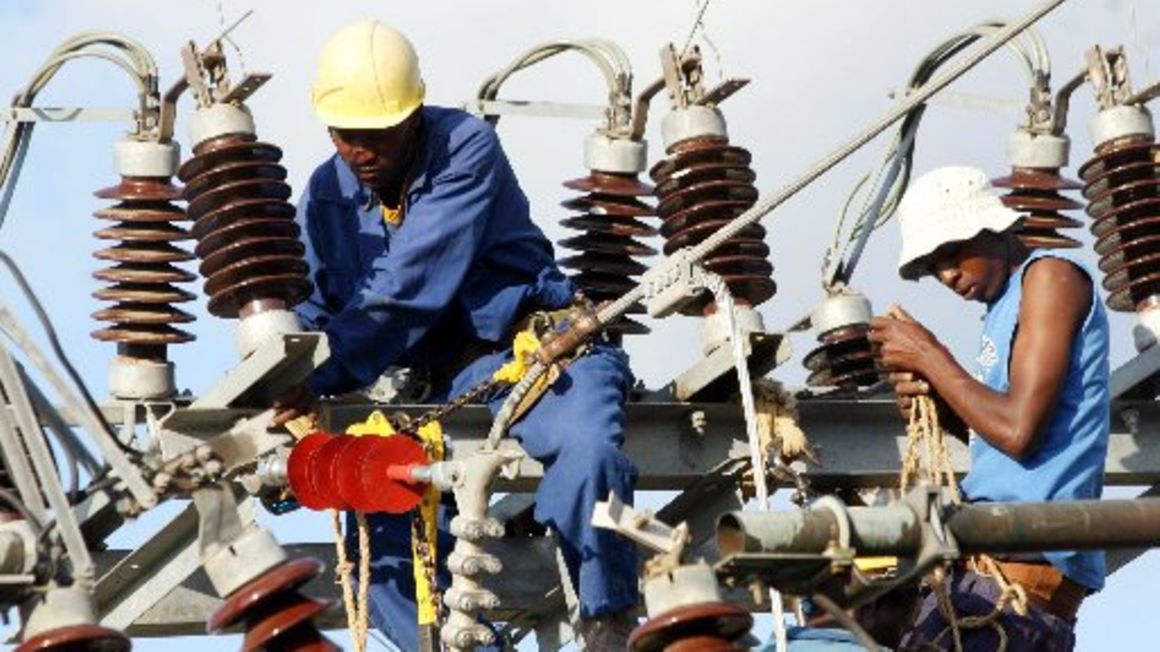
Kenya Power workers repair a power supply line. FILE PHOTO | NMG
Summary
- In the arrangement, Kenya Power will scout for customers seeking to have solar panels installed on their rooftops and contract private firms to do the job under a design-build-finance and operate (DBFO) model.
- Kenya Power would then sell the generated power at a discounted rate to the owners of homes and office blocks hosting its solar plants.
- Excess electricity would be distributed to homes and commercial entities adjacent to the solar panels—which will remain the property of Kenya Power and the private investors installing them.
Electricity distributor Kenya Power is set to join the solar business, hoping to stay relevant and protect its long-term revenues increasingly threatened by a fast uptake of home solar panels by its main customers.
The utility firm — eager to cash in rather than lose out on the millions of solar kits being mounted on the roofs of homes and business premises around the country — plans to install panels in private houses and office blocks with the promise of cheap uninterrupted electricity.
Households and heavy-consuming industrialists in Kenya have over the past five years turned to solar, seeking reliable and cheaper supply—a move that has upset Kenya Power in the wake of its reporting lower sales and losses.
“Consumers will benefit from cheaper solar energy generated during sunny hours... The solar plants will include storage with minimum autonomy to cancel out effect of short-duration supply interruptions which has been a major cause of concern among some commercial and industrial customers,” Kenya Power says in internal documents seen by the Business Daily.
In the arrangement, Kenya Power will scout for customers seeking to have solar panels installed on their rooftops and contract private firms to do the job under a design-build-finance and operate (DBFO) model.
“KPLC will undertake the role of project development by liaising with interested commercial and industrial customers who will provide rooftop space or ground space for installation of the PV (photovoltaic) modules,” says Kenya Power.
“A private sector investor will then be selected competitively through a request for proposal (RFP) to develop and operate the grid tied captive solar plants at the customer premises.”
Kenya Power would then sell the generated power at a discounted rate to the owners of homes and office blocks hosting its solar plants.
Excess electricity would be distributed to homes and commercial entities adjacent to the solar panels—which will remain the property of Kenya Power and the private investors installing them.
Kenya Power’s shift to solar systems mirrors action by utility firms in Australia, which are under threat from the world’s fastest take-up of home solar panels.
In the quest to stay relevant and safeguard their revenues, Australia’s power utilities and grid operators have for close to 10 years now gone big on strategies such as selling batteries to store solar energy or charging fees for taking excess solar power into the grid.
Australians have heavily shifted to solar in the past 15 years, buoyed by attractive State incentives after uncertainty over energy polices triggered the closure of some of the country’s coal- and gas-fired power plants, igniting blackouts and sharp increases in power prices.
Globally, a shift to solar batteries has also become popular among power grid companies which viewed the energy stored as a way of saving big cash on new poles and wires.
Kenya Power in November last year raised the alarm, saying some of its industrial customers — who account for about 54.8 percent of its sales revenues — are gradually shifting to own-generated solar power, dealing a further blow to its already dwindling finances.
“The company operated in a challenging environment over the financial year under review, where demand growth at 3.7 percent remained below the projected level of five percent. The dampened demand growth is further compounded with the increased threats of grid defection by the industrial category as decentralised renewable energy options are becoming more available and cheaper,” the utility firm said in its latest annual report.
The company got some Sh63 billion from the industrial customers who bought 4,462 gigawatt hours in the year to June 2019, representing 45 percent of its total revenue.
Several companies, universities and factories have turned to solar photovoltaic (PV) grid-tied systems to supply power for internal use to ensure reliable supply and reduced operational costs.
Big power consumers such as Africa Logistics Properties (ALP), Mombasa International Airport, the International Centre of Insect Physiology and Ecology (Icipe) have recently commissioned solar power units on their properties.
In September 2018, ALP installed a 506-kilowattpeak (kWp) hybrid solar PV, hoping to save Sh12 million per year.
In the same month Icipe commissioned its $2.5 million (Sh273.5 million) two solar PV power plants located in Kasarani, Nairobi, and on the shores of Lake Victoria. The plants have a combined generating capacity of 1,156 kWp.
Moi International Airport in Mombasa is also set to instal a 500 KW solar PV system. The ground-mounted solar system is expected to generate 820,000 kWh per year and offset 1,300 tonnes of carbon dioxide annually.





No comments :
Post a Comment